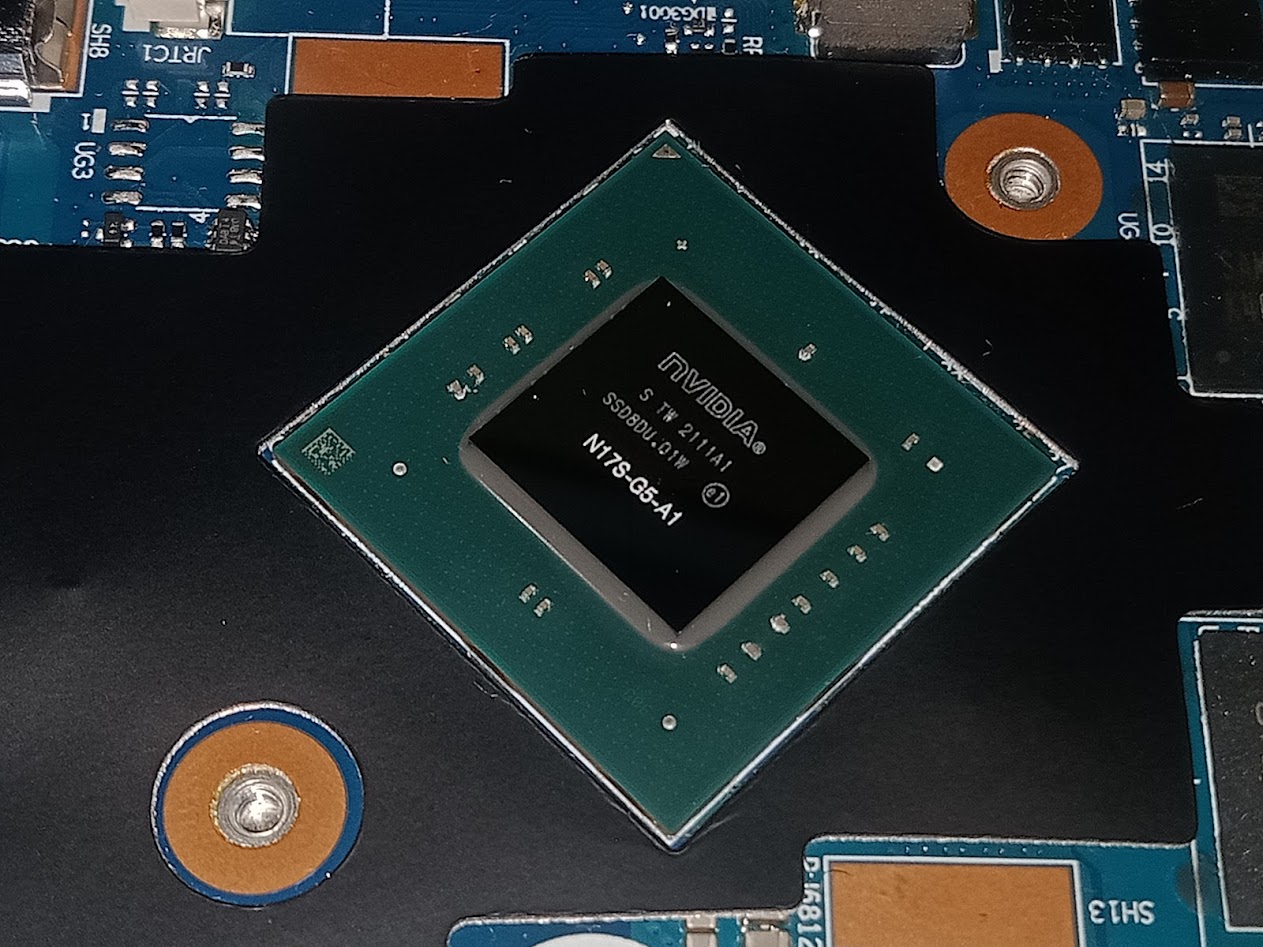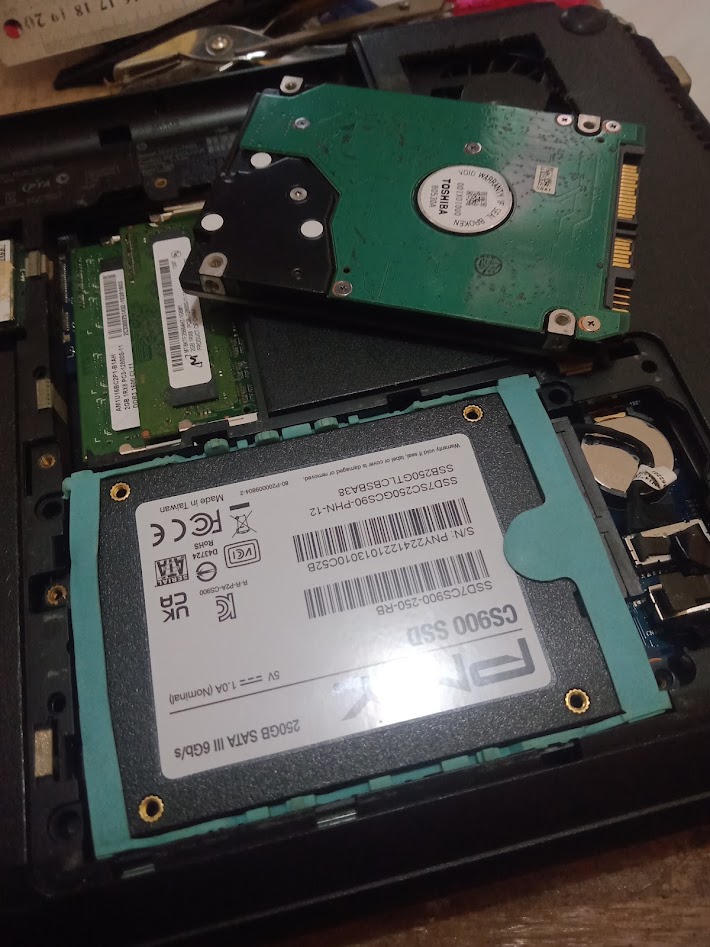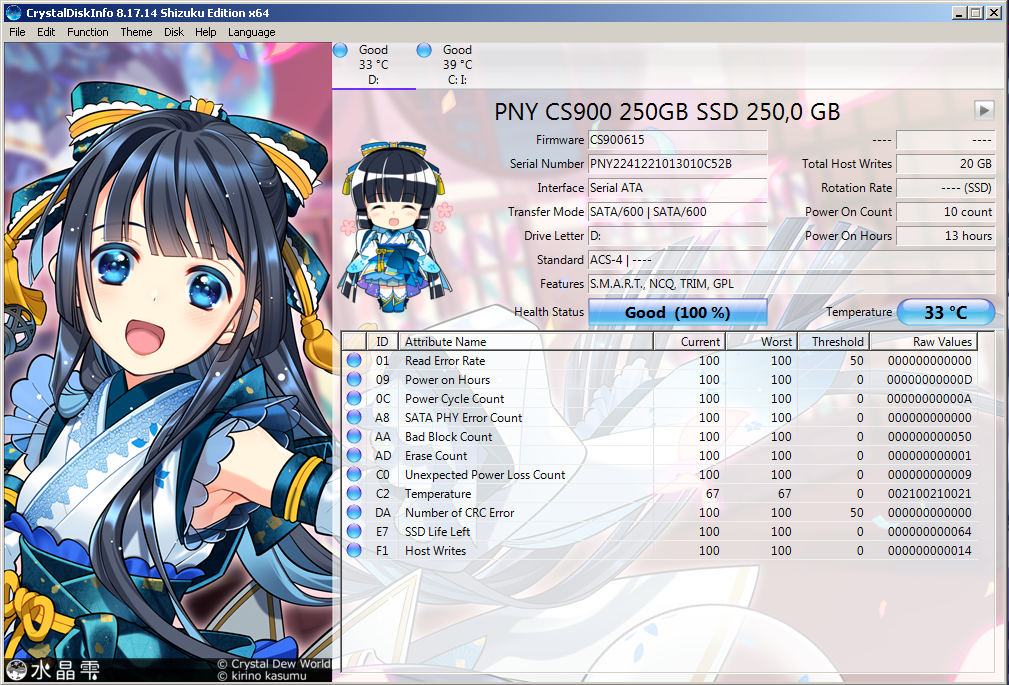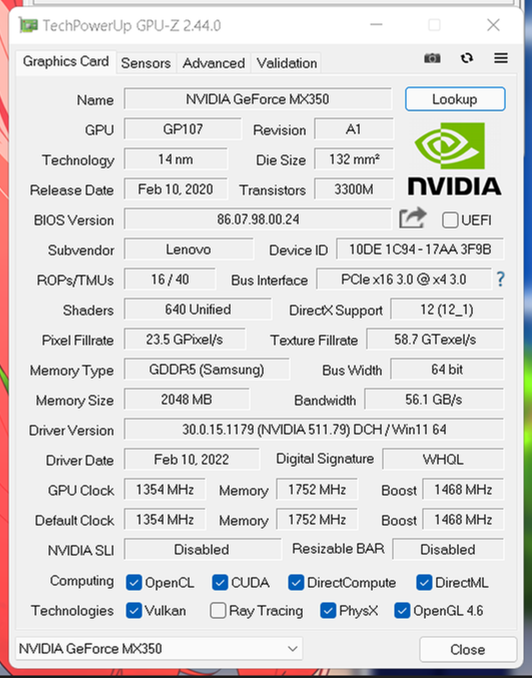Comparing: PNY CS900 250GB vs GeForce MX350 [Disk]
In this comparison, we analyze two Disks: PNY CS900 250GB and GeForce MX350 [Disk], using synthetic benchmark tests to evaluate their overall performance. This side-by-side comparison helps users understand which hardware delivers better value, speed, and efficiency based on standardized testing. Whether you're building a new system or upgrading an existing one, this benchmark-driven evaluation offers valuable insights to guide your decision.

PNY CS900 250GB
| Type: | Disks |
|---|---|
| Model: | PNY CS900 250GB |
| Capacity: | 250GB |
| Interface: | SATA-III 6Gbps |

GeForce MX350 [Disk]
| Type: | Disks |
|---|---|
| Model: | GeForce MX350 [Disk] |
| Capacity: | 2GB, 1.5GB |
| Interface: | GDDR5 |
Specification Comparison Table
This specification comparison presents technical details of several devices or components to help you understand the key differences between each option. Use this table as a reference to determine which device best suits your needs.
| Specification | PNY CS900 250GB | GeForce MX350 [Disk] |
|---|---|---|
| Brand | PNY | Samsung |
| Format | SSD 2.5 | VRAM Disk |
| Capacity | 250GB | 2GB, 1.5GB |
| Interface | SATA-III 6Gbps | GDDR5 |
Submission Comparison Table
This submission comparison table displays the number and details of benchmark data submissions from various devices or components. This information helps you understand the performance based on the benchmarks that have been tested, as well as providing an overview of the consistency and popularity of the available benchmark results.
| No. | Benchmark Software | PNY CS900 250GB | GeForce MX350 [Disk] |
|---|---|---|---|
| 1 | ATTO Disk Benchmark - 64M |
Read: 542.37 MB/s Write: 505.26 MB/s |
Read: 1440.00 MB/s Write: 1330.00 MB/s |
| 2 | CrystalDiskMark |
Read: 535.26 MB/s Write: 478.16 MB/s |
Read: 1113.58 MB/s Write: 995.48 MB/s |
Submission Comparison Chart
This chart visualizes the benchmark scores comparison between two hardware devices based on submitted data.
Media Gallery
A collection of photos of tested hardware. These images can help you identify the physical form, model, and variant of the hardware in question. These photos are from our own documentation, and if they are not available we may not be able to document them.
About Hardware PNY CS900 250GB
The PNY CS900 250GB is a SATA III (6Gbps) SSD designed as an affordable upgrade solution for users still using hard disk drives (HDDs). Utilizing 3D NAND flash memory, this SSD delivers major improvements in read and write speeds, power efficiency and operational reliability for everyday computing needs.
It is capable of achieving read speeds of up to 535MB/s and write speeds of up to 500MB/s, making it ideal for speeding up operating system boot times, streamlining application launches and accelerating file transfer processes. Compared to conventional HDDs, the performance improvements offered by the CS900 are very noticeable, especially on systems with limited specifications.
The test was conducted using an HP 1000 1b05AU laptop equipped with an AMD E1-1200 processor, 4GB DDR3 RAM, and Windows 7 64-bit operating system. This laptop supports SATA-III, so it can utilize the maximum bandwidth of the CS900. Although the test system is in the low-end category, the performance improvement after switching from HDD to SSD is significant.
In performance testing, the PNY CS900 250GB showed quite impressive results for the SATA SSD class. Using CrystalDiskMark software, read speeds were recorded at 535.26 MB/s and write speeds reached 478.16 MB/s, reflecting optimal performance on the SATA III interface. Meanwhile, tests using AS-SSD Benchmark recorded read speeds of 444.94 MB/s and write speeds of 397.23 MB/s, showing good performance consistency for various daily usage scenarios such as system booting, opening applications and transferring large files.
The PNY CS900 also offers the added benefits of silent operation, low power consumption and better shock resistance than HDDs, making it a great choice for laptop users who need a reliable and power-efficient storage solution.
With its 2.5-inch form factor and SATA III interface, this SSD is highly compatible with the majority of laptops and desktops, both old and new systems. The PNY CS900 250GB is an economical upgrade option that still delivers high performance for basic productivity, entertainment and everyday use.
Device Test:
Device: HP 1000 1b05au
CPU: AMD E1-1200
RAM: 4GB DDR3
OS: Windows 7
SATA-III
Tuesday, 31 January 2023 05:42:07 | Update: 1 month ago
About Hardware GeForce MX350 [Disk]
The NVIDIA GeForce MX350 is an entry-level GPU designed for thin and light laptops, delivering significant graphics performance improvements over the processor's built-in iGPU. The GPU is based on the Pascal architecture with 640 CUDA Cores, and features 2GB or 4GB of GDDR5 memory with 64-bit bus width. The MX350 is generally used for light graphics tasks such as photo editing, light video, and casual gaming, and provides GPU acceleration for CUDA-enabled creative applications.
But in this particular test, a portion of the video memory (VRAM) on the GeForce MX350 was configured as a VRAMDisk. The concept of a VRAMDisk is similar to a RAMDisk, but it uses the VRAM of the GPU as a super-fast storage medium. VRAMDisk allows the creation of temporary, high-speed drives that can be utilized for technical experiments, speed testing, or graphics caching in certain scenarios. Although its capacity is limited and volatile (data is lost on reboot), the high bandwidth and low latency of VRAM provide compelling performance in certain contexts.
The tests were conducted on a Lenovo IdeaPad Slim 3i 14ITL6 laptop with Intel Core i5-1135G7 processor, 12GB DDR4 3200MHz dual channel RAM, and Windows 11 22H2 operating system. The VRAMDisk was created from a 2GB GeForce MX350 GPU, with virtual disk sizes of 1GB and 1.5GB, using special software called GPU RAM Drive.
Benchmark results with CrystalDiskMark recorded read speeds of 1113.58 MB/s and write speeds of 995.48 MB/s, showing the high bandwidth potential of VRAM as a temporary storage medium. Although the performance does not match DDR4-based RAMDisks, VRAMDisks remain a unique and attractive solution for certain technical purposes, especially for users who want to utilize idle VRAM for fast I/O processes. With its dedicated laptop GPU form factor and PCIe x4 Gen 3.0 interface, the GeForce MX350 VRAMDisk opens up new exploration possibilities in the world of experimental graphics-based high-speed storage.
Device test (testbed):
Device: Lenovo IdeaPad Slim 3i 14ITL6
CPU: i5 1135G7
RAM: 12GB DDR4 3200MHz Dual Channel (8+4)
OS: Windows 11 22H2
Friday, 06 August 2021 04:34:19 | Update: 1 month ago



